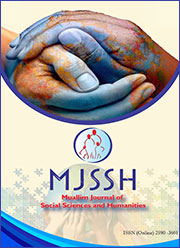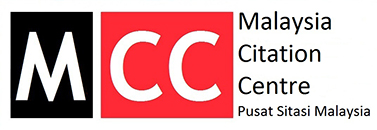The art of koolam in Sungai Petani, Kedah - Illustration perspective [Perspektif lukisan koolam dari segi ilustrasi di bandar Sungai Petani, Kedah]
Keywords:
Koolam, ilustrasi, perspektif, unsur seniAbstract
Koolam is a form of drawing that is done on the floor and is very popular in the Indian community. It is not merely meant to be decoration, but a form of communication. In this study, Koolam is researched from the illustration perspective. The study is carried out in Sungai Petani,Kedah. The Koolams that are the samples in this research are the basic forms and are drawn with spontaneous hand movements using rice in the form of powder. The method that are used in this study are Grounded Theory (the basic theory), Phenomenology, Content Analysis, Textual Analysis and Semiotic. The findings of the study on the basic 'Koolams' in the Sungai Petani town shows that they are drawn with a dot. The dot is equated to the dots that are found on the Indian women's forehead, which is known as the Pottu. These dots are then joined with various lines, that will form two or three dimentional Koolams. They also contain the art elements, which are the space, basic colours, and the perfect structure. Furthermore, the basic principles such as pattern, movement, balance, proportion, harmony, and emphasis are obviousin the Koolams that are found in the Sungai Petani, town in Kedah. This research was carried out with the aim of giving exposure and experience to the new generation, so that it is not just seen as a piece of decorative art.
[Koolam merupakan lukisan lantai yang amat popular dalam kalangan masyarakat India. Lukisan Koolam bukan melibatkan hiasan semata-mata malah ia merupakan media komunikasi. Dalam kajian ini, lukisan Koolam dikaji dari perspektif ilustrasi. Kajian dijalankan di bandar Sungai Petani, Kedah. Koolam yang menjadi sampel kajian ialah Koolam asas yang diperbuat daripada serbuk beras dengan menggunakan pergerakan tangan yang spontan. Metod yang digunakan dalam kajian ini terdiri daripada kaedah aspek Grounded Theory (teori asas), Phenomenology (fenomenologi), Content Analysis (analisis kandungan), Textual Analysis (analisis teks) dan Semiotics (semiotik). Dapatan kajian membuktikan bahawa Koolam-Koolam asas di bandar Sungai Petani dimulakan dengan titik. Titik ini disamakan dengan ‘pottu’, iaitu tanda yang terdapat pada dahi kaum wanita India. Titik-titik pada kolam kemudian disatukan agar berbentuk pelbagai jenis garisan yang kemudiannya membentuk Koolam dua dimensi dan tiga dimensi. Koolam-Koolam di Sungai Petani terdiri daripada unsur seni, iaitu ruang, warna asas dan tekstur yang sempurna. Prinsip asas yang terdiri daripada corak, pergerakan, keseimbangan, proposi, harmoni dan penekanan dalam lukisan kolam jelas kelihatan pada Koolam-Koolam di bandar Sungai Petani, Kedah. Kajian ini diharapkan dapat memberikan pendedahan dan pengalaman baharu kepada generasi baharu yang hanya melihat Koolam sebagai lukisan perhiasan.]
References
Suresh, S. (2003). Colourful tradition. Chennai: The Hindu. Retrieved from http://www.thehindu.com/thehindu/mp/2003/01/07/stories/2003010700050200.htm
Kavita. (2006). Read between the lines. Madurai: The Hindu
Chesky, N. Z., & Wolfmeyer, M. R. (2015). Philosophy of STEM education: A critical investigation. New York: Palgrave MacMillan
Claus, P. J., Diamond, S., & Mills, M. A. (2003). South Asian folklore: An encyclopedia : Afghanistan, Bangladesh, India, Nepal, Pakistan, Sri Lanka. New York: Routledge.
Laine, A. (2013). Kolam patterns as materialisation and embodiment of rhythms. Anthrovision, 2-11.
Nagarajan, V. R. (1998). Hosting the divine: The kolam as ritual, art and ecology in Tamil Nadu, India. Berkeley: University of California.
Smirth, A. (2013). Kolam patterns as materialisation and embodiment of rhythms. Utrecht: Universiteit Utrecht.
Ahmad Marzuki Monir (2018). Simple projection of prospective painting - dot (Unjuran mudah lukisan perspektif 1 – titik). Dewan Bahasa Dan Pustaka.
Vanderstoep, S. W., & Johnston, D. D. (2009). Research methods for everyday life: Blending qualitative and quantitative approaches. San Francisco: Jossey-Bass.
Schreier, M. (2012). Qualitative content analysis in practice. Sage.
Pintchman, T. (2007). Women’s lives, women’s rituals in the Hindu traditions. Chicago: Loyola University Chicago.
Ragans, R. (2005). Arttalk. New York: Glencoe/McGraw-Hill.
Raghavan. (2012, June 3). Kolam preparation in traditional Hindu families. (B. K. C, Interviewer)
Muthikrishnan, V. (2008). My kolam. Retrieved from mykolam.blogspot.in: http://mykolam.blogspot.in/2011/12/dotted-padi-kolam.html
Published
 Abstract Display: 363
Abstract Display: 363  PDF Downloads: 410
PDF Downloads: 410 













 This work is licensed under a
This work is licensed under a